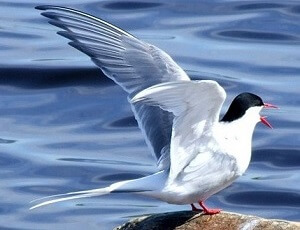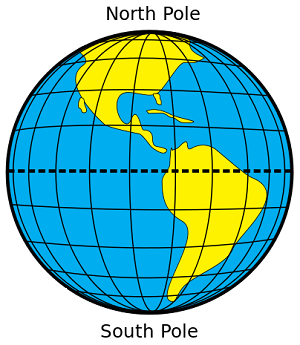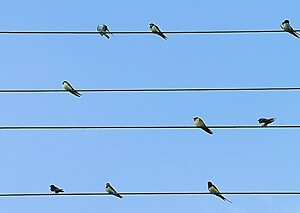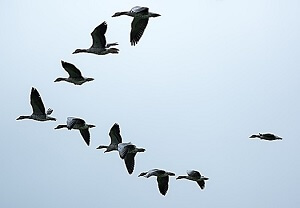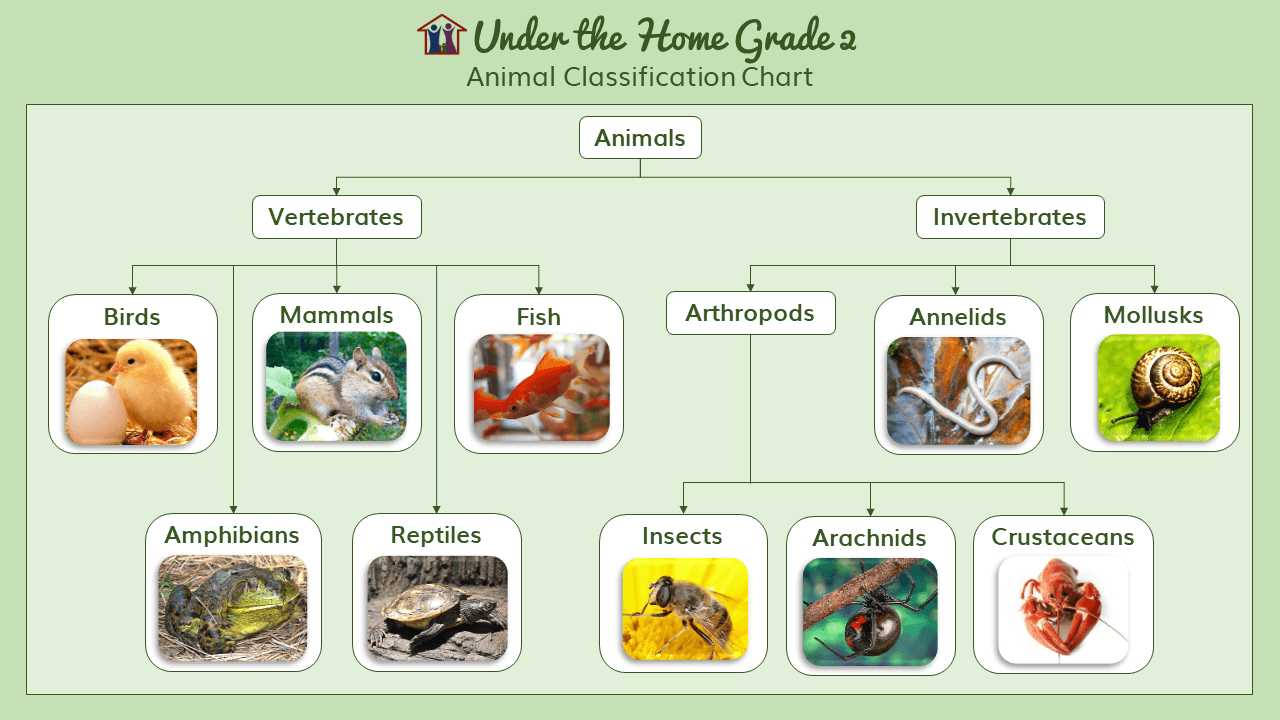Lesson 14: Bird Migration
Performer: LibriVox - Claire Schreuder
'The Story that the Swallow Didn't Tell' from Among the Farmyard People by Clara Dillingham Pierson
"Listen!" said the Nigh Ox, "don't you hear some friends coming?"
The Off Ox raised his head from the grass and stopped to brush away a Fly, for you never could hurry either of the brothers. "I don't hear any footfalls," said he.
"You should listen for wings, not feet," said the Nigh Ox, "and for voices, too."
Even as he spoke there floated down from the clear air overhead a soft "tittle-ittle-ittle-ee," as though some bird were laughing for happiness. There was not a cloud in the sky, and the meadow was covered with thousands and thousands of green grass blades, each so small and tender, and yet together making a most beautiful carpet for the feet of the farmyard people, and offering them sweet and juicy food after their winter fare of hay and grain. Truly it was a day to make one laugh aloud for joy. The alder tassels fluttered and danced in the spring breeze, while the smallest and shyest of the willow pussies crept from their little brown houses on the branches to grow in the sunshine.
"Tittle-ittle-ittle-ee! Tittle-ittle-ittle-ee!" And this time it was louder and clearer than before.
"The Swallows!" cried the Oxen to each other. Then they straightened their strong necks and bellowed to the Horses, who were drawing the plow in the field beyond, "The Swallows are coming!"
As soon as the Horses reached the end of the furrow and could rest a minute, they tossed their heads and whinnied with delight. Then they looked around at the farmer, and wished that he knew enough of the farmyard language to understand what they wanted to tell him. They knew he would be glad to hear of their friends' return, for had they not seen him pick up a young Swallow one day and put him in a safer place?
"Tittle-ittle-ittle-ee!" and there was a sudden darkening of the sky above their heads, a whirr of many wings, a chattering and laughing of soft voices, and the Swallows had come. Perched on the ridge-pole of the big barn, they rested and visited and heard all the news.
The Doves were there, walking up and down the sloping sides of the roof and cooing to each other about the simple things of everyday life. You know the Doves stay home all winter, and so it makes a great change when their neighbors, the Swallows, return. They are firm friends in spite of their very different ways of living. There was never a Dove who would be a Swallow if he could, yet the plump, quiet, gray and white Doves dearly love the dashing Swallows, and happy is the Squab who can get a Swallow to tell him stories of the great world.
"Isn't it good to be home, home, home!" sang one Swallow. "I never set my claws on another ridge-pole as comfortable as this."
"I'm going to look at my old nest," said a young Swallow, as she suddenly flew down to the eaves.
"I think I'll go, too," said another young Swallow, springing away from his perch. He was a handsome fellow, with a glistening dark blue head and back, a long forked tail which showed a white stripe on the under side, a rich buff vest, and a deep blue collar, all of the finest feathers. He loved the young Swallow whom he was following, and he wanted to tell her so.
"There is the nest where I was hatched," she said. "Would you think I was ever crowded in there with five brothers and sisters? It was a comfortable nest, too, before the winter winds and snow wore it away. I wonder how it would seem to be a fledgling again?" She snuggled down in the old nest until he could see only her forked tail and her dainty head over the edge. Her vest was quite hidden, and the only light feathers that showed were the reddish-buff ones on throat and face; these were not so bright as his, but still she was beautiful to him. He loved every feather on her body.
"I don't want you to be a fledgling again," he cried. "I want you to help me make a home under the eaves, a lovely little nest of mud and straw, where you can rest as you are now doing, while I bring food to you. Will you?"
"Yes," she cried. "Tittle-ittle-ittle-ee! Oh, tittle-ittle-ittle-ee!" And she flew far up into the blue sky, while he followed her, twittering and singing.
"Where are those young people going?" said an older Swallow. "I should think they had flown far enough for today without circling around for the fun of it."
"Don't you remember the days when you were young?" said the Swallow next to him.
"When I was young?" he answered. "My dear, I am young now. I shall always be young in the springtime. I shall never be old except when I am moulting."
Just then a family of Doves came pattering over the roof, swaying their heads at every step. "We are so glad to see you back," said the father. "We had a long, cold winter, and we thought often of you."
"A very cold winter," cooed his plump little wife.
"Tell me a story," said a young Dove, their son.
"Hush, hush," said the Father Dove. "This is our son," he added, "and this is his sister. We think them quite a pair. Our last brood, you know."
"Tell us a story," said the young Dove again.
"Hush, dear. You mustn't tease the Swallow," said his mother. "They are so fond of stories," she cooed, "and they have heard that your family are great travellers."
"But I want him to tell us a story," said the young Dove. "I think he might."
This made the Swallow feel very uncomfortable, for he could see that the children had been badly brought up, and he did not want to tell a story just then.
"Perhaps you would like to hear about our journey south," said he. "Last fall, when the maples began to show red and yellow leaves among the green, we felt like flying away. It was quite warm weather, and the forest birds were still here, but when we feel like flying south we always begin to get ready."
"I never feel like flying south," said the young Dove. "I don't see why you should."
"That is because I am a Swallow and you are a farmyard Dove. We talked about it to each other, and one day we were ready to start. We all had on our new feathers and felt strong and well. We started out together, but the young birds and their mothers could not keep up with the rest, so we went on ahead."
"Ahead of whom?" said the young Dove, who had been preening his feathers when he should have been listening.
"Ahead of the mothers and their fledglings. We flew over farms where there were Doves like you; over rivers where the Wild Ducks were feeding by the shore; and over towns where crowds of boys and girls were going into large buildings, while on top of these buildings were large bells singing, 'Ding dong, ding dong, ding dong.'"
"I don't think that was a very pretty song," said the young Dove.
"Hush," said his mother, "you mustn't interrupt the Swallow."
"And at last we came to a great lake," said the Swallow. "It was so great that when we had flown over it for a little while we could not see land at all, and our eyes would not tell us which way to go. We just went on as birds must in such places, flying as we felt we ought, and not stopping to ask why or to wonder if we were right. Of course we Swallows never stop to eat, for we catch our food as we fly, but we did sometimes stop to rest. Just after we had crossed this great lake we alighted. It was then that a very strange thing happened, and this is really the story that I started to tell."
"Oh!" said the young Dove and his sister. "How very exciting. But wait just a minute while we peep over the edge of the roof and see what the farmer is doing." And before anybody could say a word they had pattered away to look.
The birds who were there say that the Swallow seemed quite disgusted, and surely nobody could blame him if he did.
"You must excuse them," cooed their mother. "They are really hardly more than Squabs yet, and I can't bear to speak severely to them. I'm sure they didn't mean to be rude."
"Certainly, certainly," said the Swallow. "I will excuse them and you must excuse me. I wish to see a few of my old friends before the sun goes down. Good afternoon!" And he darted away.
The young Doves came pattering back, swaying their heads as they walked. "Why, where is the Swallow?" they cried. "What made him go away? Right at the best part of the story, too. We don't see why folks are so disagreeable. People never are as nice to us as they are to the other young Doves."
"Hush," said their mother. "You mustn't talk in that way. Fly off for something to eat, and never mind about the rest of the story."
When they were gone, she said to her husband, "I wonder if they did hurt the Swallow's feelings? But then, they are so young, hardly more than Squabs."
She forgot that even Squabs should be thoughtful of others, and that no Dove ever amounts to anything unless he begins in the right way as a Squab.
 Animal Nature Study
Animal Nature Study
Animal Nature Study
Animal Nature Study

 Animal Nature Study
Animal Nature Study
Animal Nature Study
Animal Nature Study

